Day 2 — Sunday, Dec. 7
All times are Mountain Standard Time.
Display Preferences
Hide/Show
8:00 a.m.–5:00 p.m. | Room 231 AB | General
Sputum Bowl Prelims
Show description
Stop by and watch our Sputum Bowl teams from around the country compete for an opportunity to go head to head in the Finals on Monday night.
8:00 a.m.–8:30 a.m. | Room 227 | General
Education Section Meeting
Jennifer Anderson, EdD, RRT, RRT-NPS, FAARC
Show description
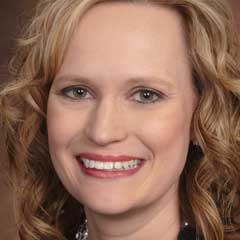
Section members meet to determine their needs and priorities, as well as how to use AARC resources to accomplish them. All Congress attendees, including section non-members, are invited to attend and participate.
8:00 a.m.–8:30 a.m. | Room 226 | General
Ambulatory and Post-Acute Care Specialty Section
Mike Hess, MPH, RRT, RPFT
Show description
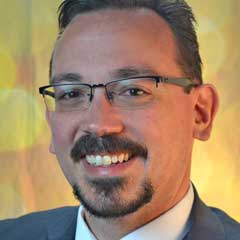
Section members meet to determine their needs and priorities, as well as how to use AARC resources to accomplish them. All Congress attendees, including section non-members, are invited to attend and participate.
8:30 a.m.–9:50 a.m.
Symposium
Asthma Management
8:30 a.m.–9:05 a.m. | Room 224 | Education
Digital Health in Asthma Management
Joyce Baker, MBA, RRT, NPS, AE-C, FAARC
Show description

Digital health technologies encompass a wide range of tools and platforms that utilize individualized health information to improve inefficiencies in communication, integrated personalized care, increased access to and quality of care. This presentation will review different digital health technologies such as wearable devices, remote monitoring, and artificial intelligence, and the advantages of their use in asthma management.
9:15 a.m.–9:50 a.m. | Room 224 | Education
Customizing Asthma — Education for Patients and Families
Denise Willis, MSc, RRT, RRT-NPS, AE-C, FAARC
Show description

Respiratory therapists have a unique opportunity to provide asthma education to patients and families across a variety of care settings, including the hospital, emergency department, and outpatient specialty and primary care clinics. This presentation will review the elements of asthma education as outlined by the current guidelines and discuss the tools and strategies that can be used to ensure understanding by patients and families.
8:30 a.m.–9:05 a.m. | Room 229 | Leadership & Management
A Joint AARC/CHEST Session: The RT and Medical Director Leadership Dyad
Katie Burr, MSM-HCA, RRT, RRT-NPS, AE-C, FAARC
Ira Cheifetz, MD, FAARC
Kevin O’Neil, MD, MHA, FCCP, FACP
Show description

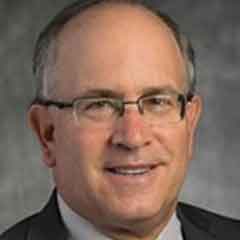

This panel discussion will explore the critical partnership between the RT Leader and the Medical Director, two pivotal roles in driving excellence in patient care and clinical management. Panelists, comprising experienced RT leaders and Medical Directors, will share insights into the challenges and benefits of this leadership dyad, offering real-world examples of collaboration, decision-making, and problem-solving. The discussion will focus on strategies for building a strong partnership, fostering effective communication, and aligning goals to achieve optimal patient outcomes.
8:30 a.m.–9:05 a.m. | Room 227 | Education
Update on 2025 CoARC Entry into Practice Standards
Tom Smalling, PhD, RRT, RRT-SDS, RPFT, RPSGT, FAARC
Lindsay Fox, RRT, RRT-ACCS, RRT-NPS
Show description
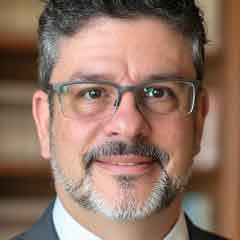

The presenters will continue the dialogue with an update and overview of the proposed 2025 accreditation standards and their implications for programs and the profession. Emphasis will be placed on the progress thus far, the next steps, and timeline for completing the revision. Time will be allotted for questions and comments from members of the audience.
Sponsored by
8:30 a.m.–10:35 a.m. a.m.
Symposium
New Insights into Ventilator Induced Lung Injury
8:30 a.m.–9:05 a.m. | Room 221 | Adult Acute Care
Ventilator Disconnects and Fluid Balance as Contributors to Lung Injury
Bhushan Katira, MD, PhD
Show description

This session explores the dual impact of ventilator disconnections and fluid administration on the development and progression of ventilator-induced lung injury (VILI). Attendees will learn how these factors contribute to atelectrauma and pulmonary edema and gain insights into strategies to mitigate their effects.
9:15 a.m.–9:50 a.m. | Room 221 | Adult Acute Care
Airway Closure: Underestimated and Misinterpreted
Thomas Piraino, RRT, FCSRT, FAARC
Show description

This talk sheds light on the often overlooked phenomenon of airway closure and its potential role in ventilator-induced lung injury (VILI). Attendees will gain insight into the potential mechanisms behind airway closure and how to determine airway opening pressure.
10:00 a.m.–10:35 a.m. | Room 221 | Adult Acute Care
Pendelluft: Physiologic or Injurious Phenomenon?
Glasiele Alcala, PT, RRT, PhD
Show description
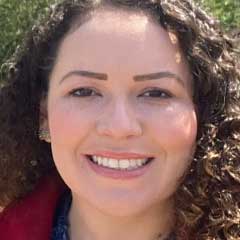
This presentation focuses on the increased understanding of pendelluft as a physiological phenomenon and potential contributor to ventilator-induced lung injury (VILI). Attendees will explore the physiological underpinnings, implications of these phenomena, and strategies to mitigate their effects in mechanically ventilated patients.
8:30 a.m.–9:05 a.m. | Room 222 | Neonatal/Pediatric
The Pathophysiology Behind the Pictures
Sara Parker, RRT, RRT-NPS, RRT-ACCS, AE-C
Show description

As respiratory therapists at the bedside, we see countless chest x-rays. But what is it about the pathophysiology that characterizes chest x-rays? This presentation will detail the pathophysiology of various neonatal and pediatric chest x-ray findings, and treatment using before-and-after images to demonstrate how the treatment changes the appearance of the x-ray, by changing the pathophysiology in the lung.
8:30 a.m.–9:05 p.m. | Room 226 | Post Acute Care
The Role of the Respiratory Therapist in Inpatient Rehabilitation Hospitals
Christina Stevens, RRT, RRT-ACCS
Show description

Respiratory therapists provide essential input into the management of patients in the inpatient rehabilitation setting. This session will focus on the key interventions and interdisciplinary collaboration in these setting with emphasis on the balance between high-quality care and financial sustainability.
8:30 a.m.–10:25 a.m. | Room 121 | Clinical Practice
Open Forum #3 — Oxygen Therapy and Pulmonary Function Testing
Show description
Researchers present the results of their work. Authors briefly present their findings and engage in an open discussion with the attendees.
Supported by an unrestricted educational grant from
8:30 a.m.–10:25 a.m. | Room 122 | Clinial Practice
Open Forum Walk Rounds #3
Show description
Researchers present the results of their work. Authors briefly present their findings and engage in an open discussion with the attendees.
Supported by an unrestricted educational grant from
9:00 a.m.–2:00 p.m. | North Hall B–E | General
Expo Hall Open
9:15 a.m.–10:35 a.m.
Symposium
Elevating Simulation Learning through Debriefing
9:15 a.m.–9:50 a.m. | Room 227 | Education
Debrief Like A Boss: Make it Stick!
Jasmine Brown, MS, RRT, RRT-ACCS, CHSE-A
Show description
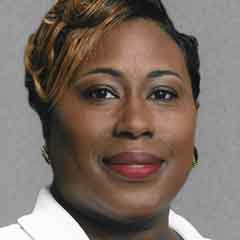
This interactive session will help learners improve simulation-based education using evidence-based debriefing strategies. Participants will examine how debriefing turns simulation experiences into lasting clinical insights, enhancing critical thinking, clinical judgment, and reflective practice. Through realistic respiratory therapy scenarios and role-playing, attendees will gain practical tools to incorporate effective debriefing tailored to RT education. The session will cover the importance of debriefing in RT simulation and highlight two of the most relevant debriefing models in medical education.
10:00 a.m.–10:35 a.m. | Room 227 | Education
Effective Debriefing with Standardized Patients
Samantha Davis, MS, RRT, RRT-NPS, CHSE-A, FAARC
Show description

This presentation will explore the unique considerations for debriefing respiratory care students following simulations involving standardized patients (SPs). We will discuss the purpose, benefits, and challenges of utilizing SPs in simulation, and review the Association of Standardized Patient Educators (ASPE) Standards of Best Practice to guide effective debriefing strategies.
9:15 a.m.–9:50 a.m. | Room 226 | Post Acute Care
Clinical RT Roles in Post-Acute Care: Providing Value
Krystal Craddock, MSRC, RRT, RRT-NPS, AE-C, RRT-ACCS, CCM
Show description

Many RT roles outside of the acute care setting are limited to diagnostics, rehabilitation, or Durable Medical Equipment (DME). However, there are necessary roles for RTs in the clinical space to improve symptoms, decrease exacerbations, and reduce unnecessary healthcare utilization. This talk will explore these non-traditional roles and how RTs in the clinical setting outside of the hospital and discuss evidence that supports the fundamental value of these roles.
9:15 a.m.–9:50 a.m. | Room 229 | Leadership & Management
Leading By Applying Evidence-Based Practice
Kellianne Fleming, MSc, RRT, RRT-ACCS, RRT-NPS
Show description

Evidence-based practice has become the norm in recent years. Evidence-based practice is also an opportunity to demonstrate leadership, whether as a bedside clinician, manager, or educator. This lecture covers the current elements of evidence-based practice and how this can be used to demonstrate leadership.
9:15 a.m.–9:50 a.m. | Room 222 | Neonatal/Pediatric
The Baby Brain: Hypoxic Ischemic Brain Injury in the Full-Term Infant
Debra Selip, MD, MBA
Show description

This lecture will provide a review of neonatal encephalopathy due to hypoxic ischemic brain injury. The most current data on pathology, treatments, and outcomes for this vulnerable neonatal population will be described.
10:00 a.m.–10:35 a.m. | Room 226 | Post Acute Care
Disease Management and the Respiratory Therapist: A Primary Care Model
Kristin Goessl, BS, RRT, RCP, AE-C
Show description

The individualized treatment of patients with chronic lung disease is paramount in the management process of patients in the primary care setting. This session will describe the development and implementation of a primary care program for the patient with chronic lung disease using respiratory therapists in a primary role.
10:00 a.m.–10:35 a.m. | Room 229 | Leadership & Management
From Burnout to Balance: Strategies for Workforce Retention and Engagement
Matt Nolan, MBA, RRT, RRT-NPS, RRT-ACCS
Show description
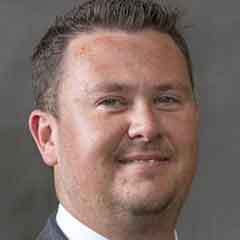
Respiratory Therapists work within high-pressure environments and are at high risk for burnout. Leaders must support RTs in managing burnout and ensuring a stable workforce. This session will review strategies for workforce retention and staff engagement to support balance.
10:00 a.m.–10:35 a.m. | Room 222 | Neonatal/Pediatric
Breathing Through a Straw and Other Silly Pediatric Airway Myths
Alexandre Rotta, MD, FCCM, FAARC
Show description

For as long as endotracheal tubes have been used, clinicians have likened breathing through their smaller diameter and greater length, compared to the natural airway, to the experience of “breathing through a straw.” This presentation will explore the reasons behind this misconception and present evidence supporting the argument that breathing is, in fact, easier through an endotracheal tube. Along the way, we will also debunk other longstanding pediatric airway myths, such as the belief in its conical shape and the notion of “intelligent design.”
12:00 p.m.–1:55 p.m. | Room 121 | Neonatal/Pediatric
Open Forum #4 — Neonatal/Pediatrics Part 1
Show description
Researchers present the results of their work. Authors briefly present their findings and engage in an open discussion with the attendees.
Supported by an unrestricted educational grant from
12:00 p.m.–1:55 p.m. | Room 122 | Adult Acute Care
Open Forum #5 — Mechanical Ventilation Part 1
Show description
Researchers present the results of their work. Authors briefly present their findings and engage in an open discussion with the attendees.
Supported by an unrestricted educational grant from
12:45 p.m.–1:20 p.m. | Room 224 | DEI
Rethinking Recruitment: Engaging and Supporting “Diverse” Student Populations
Gabrielle Davis, MPH, MA, RRT, LPC, FAARC
Show description

With growing awareness of the importance of IDEAA (Inclusion, Diversity, Equity, Access and Accountability) in education, many organizations are prioritizing outreach to “diverse” student populations. But what does effective engagement look like in practice? In this session, we’ll explore innovative approaches to connect with students from various backgrounds and discuss how creating safer, more supportive spaces can empower these students to thrive in educational programs. Attendees will leave with fresh perspectives, actionable ideas, and inspiration to drive meaningful change in their institutions.
12:45 p.m.–1:20 p.m. | Room 227 | General
Taskforce and Committee Updates
Show description
12:45 p.m.–1:05 p.m. — APEX Taskforce
1:05 p.m.–1:25 p.m. — Clinical Educator Committee
1:25 p.m.–1:45 p.m. — SESG Taskforce
1:45 p.m.–2:05 p.m. — Education Access and Barriers Taskforce
12:45 p.m.–2:05 p.m.
Symposium
Guidelines for ARDS Management
12:45 p.m.–1:20 p.m. | Room 221 | Adult Acute Care
Examining the Differences Between Current ARDS Recommendations
Stefano Spina, MD
Show description
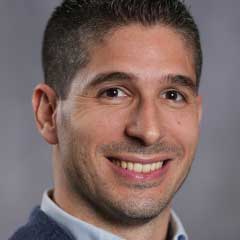
This session explores the varying recommendations surrounding the use of Positive End-Expiratory Pressure (PEEP) and neuromuscular blocking agents in the management of ARDS. By comparing current guidelines and emerging evidence, attendees will gain a deeper understanding of these interventions and their role in patient care.
1:30 p.m.–2:05 p.m. | Room 221 | Adult Acute Care
Considerations and Future Direction for ARDS Management
Lorenzo Berra, MD
Show description

This session highlights the importance of understanding the heterogeneity within Acute Respiratory Distress Syndrome (ARDS) for personalized management strategies. Participants will explore how identifying ARDS phenotypes can improve our pathophysiological understanding, trial design and optimize outcomes via targeted interventions.
12:45 p.m.–1:20 p.m. | Room 226 | Adult Acute Care
Panel: Making a List and Checking it Twice
James Keith, BS, RRT, RRT‑NPS, RRT‑ACCS, AE‑C, CHSE
Kellianne Fleming, MSc, RRT, RRT-ACCS, RRT-NPS
Andrew Klein, MS, RRT, RRT-ACCS, RRT-NPS, AE-C, FCCP, FAARC
Show description
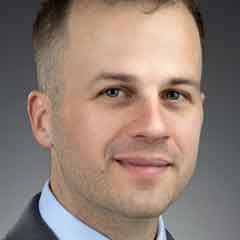


Being prepared for emergencies is essential for respiratory patients. This is intensified when transporting patients, as resources are often further limited. This panel discussion will highlight the importance of checklists for safety when transporting patients.
12:45 p.m.–1:20 p.m. | Room 229 | Leadership & Management
The Leadership Superpower: Inspiring Change Through Storytelling
Edward F. Garcia, MBA, MS, RRT, FAARC
Show description

In the dynamic world of leadership, storytelling emerges as a game-changing tool for connection, persuasion, and legacy-building. This session unveils the transformative power of storytelling, guiding leaders to weave narratives that inspire trust, foster engagement, and drive organizational success. Participants will explore how stories can articulate vision, values, and goals in a way that resonates deeply and motivates action.
12:45 p.m.–5:20 p.m.
Symposium
Year in Review
12:45 p.m.–1:20 p.m. | Room 222 | Adult Acute Care
Cystic Fibrosis Modulator Therapy: Efficacy, Access and Evolution
Dawn Selhorst, RRT, RRT-NPS, RPFT
Show description

Evidence to support the use of modulator therapies in cystic fibrosis is rapidly growing. The evolving role of CF modulators in disease progression, airway clearance, and long-term outcomes will be discussed through an examination of the most impactful papers published in the last calendar year.
1:30 p.m.–2:05 p.m. | Room 222 | Adult Acute Care
Neonatal Mechanical Ventilation
Rob DiBlasi, PhD(c), BSRT, RRT-NPS, FAARC
Show description

Neonatal mechanical ventilation requires careful application and sophisticated monitoring to assure safety and efficacy. This presentation will discuss the most important papers regarding advances in neonatal mechanical ventilation in the last year.
3:15 p.m.–3:50 p.m. | Room 222 | Adult Acute Care
High Flow Nasal Cannula in COPD
Jie Li, PhD, RRT, RRT-ACCS, RRT-NPS, FAARC, FCCM
Show description

High flow nasal cannula has proven to be an effective method for supporting oxygenation and mild hypercapnia in patients with COPD. Patient comfort is a major advantage of HFNC. This presentation will provide a description of important papers published last year related to the application of HFNC in patients with COPD.
4:00 p.m.–4:35 p.m. | Room 222 | Adult Acute Care
Pulmonary Rehabilitation
Brian Carlin, MD, FAARC, MAACVPR
Show description
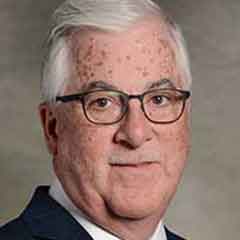
This presentation will review the literature on pulmonary rehabilitation published in the last year. This will include telerehabilitation and cover the newly published guidelines on pulmonary rehabilitation.
4:45 p.m.–5:20 p.m. | Room 222 | Adult Acute Care
Mechanical Power Impact on Mechanical Ventilation
William Letourneau, MA, RRT, RRT-ACCS, ATSF
Show description

This presentation will discuss the research published in the last year related to the measurement and impact of mechanical power during mechanical ventilation.
1:30 p.m.–2:05 p.m. | Room 224 | Education
Tracking Student Burnout: Mental Health Tools for RT Educators
David Eitel, RRT, MHA, MSRT, RRT-ACCS, CPFT
Show description

Respiratory therapy students face intense academic and clinical demands, often leading to burnout that impacts their mental health and professional readiness. This session equips RT educators with evidence-based tools to measure, track, and address student burnout effectively. Attendees will explore widely recognized tools, including the Maslach Burnout Inventory, ProQOL, PHQ-9, and GAD-7, learning how to implement these assessments to identify signs of burnout and anxiety. The lecture provides actionable strategies for integrating these tools into educational programs, fostering resilience, and supporting students from the classroom to the workforce. By focusing on proactive mental health monitoring, RT educators can create a culture of support that reduces burnout rates, improves retention, and prepares students for long-term success in respiratory care.
1:30 p.m.–2:05 p.m. | Room 229 | Leadership & Management
Respiratory Leaders Can and Should Venture Outside Traditional RT Roles
Matthew McNally, BSRT, RRT, LSSBB
Show description
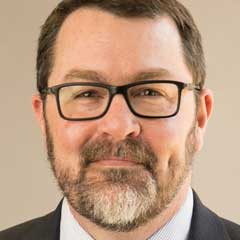
This presentation will highlight the value RT leaders provide in quality improvement, innovation, and patient safety. This will include the non-traditional roles and quality improvement credentials available to RT staff that make these leaders attractive to organizations. Additionally, this presentation will use real life examples of improvements driven by respiratory leaders that improve health care across the care continuum.
1:30 p.m.–2:05 p.m. | Room 226 | Neonatal/Pediatric
Rolling, Rolling, Rolling — Pediatric ECMO Transport
Jennifer Watts, MSC, RRT, RRT-NPS, FAARC
Show description
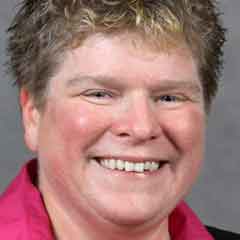
ECMO serves as a lifesaving intervention for the most critically ill pediatric patients experiencing either respiratory or cardiac failure. Times occur when ECMO may not be sustainable at one institution and transport of the ECMO patient must occur. The transport environment creates a new challenge for the ECMO patient and the care they require.
12:00 p.m.–12:40 p.m. | Room 221 | General
Adult Acute Care Section Meeting
Elisabeth Caldwell, MBA, RRT
Show description

Section members meet to determine their needs and priorities, as well as how to use AARC resources to accomplish them. All Congress attendees, including section non-members, are invited to attend and participate.
12:00 p.m.–12:40 p.m. | Room 229 | General
Leadership & Management Section Meeting
Gbolahan “Gboly” Harris, MSM–HCA, RRT, FAARC, FNAP, CEC
Show description

Section members meet to determine their needs and priorities, as well as how to use AARC resources to accomplish them. All Congress attendees, including section non-members, are invited to attend and participate.
12:00 p.m.–12:40 p.m. | Room 226 | General
Critical Care Transport Section Meeting
Jennifer Watts, MSC, RRT, RRT-NPS, FAARC
Show description

Section members meet to determine their needs and priorities, as well as how to use AARC resources to accomplish them. All Congress attendees, including section non-members, are invited to attend and participate.
2:15 p.m.–3:05 p.m. | North Ballroom | Adult Acute Care
5th Robert M. Kacmarek Scientific Memorial Lecture
Implementation Science in Mechanical Ventilation
Michelle Gong, MD, MS, ATSF
Show description

Implementation science is a field that promotes the incorporation of evidence-based treatments and interventions into real-world practice to improve patient outcomes. It focuses on identifying and addressing barriers to adoption, integration, and maintenance of effective practices, aiming to bridge the gap between what has been demonstrated to improve outcomes versus what is commonly practiced at the bedside. A prime example is the use of lung protective tidal volumes in ARDS. This presentation will highlight the role of implementation science in the safe and effective delivery of mechanical ventilation.
Sponsored by Nihon Kohden and Dr. Honglin Du
3:15 p.m.–5:20 p.m.
Symposium
Bridging the Gap: From Clinical Practice to Academic Excellence in RT
3:15 p.m.–3:50 p.m. | Room 224 | Education
The First Step is Answering the Call: Why RTs Choose to Teach
Sarah Varekojis, PhD, RRT, RRT-ACCS, FNAP, FAARC
Jennifer Anderson, EdD, RRT, RRT-NPS, FAARC
Show description
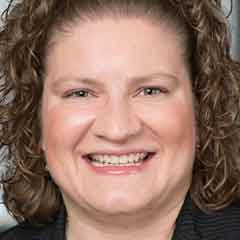

This session dives into the motivations and rewards behind becoming an educator in respiratory therapy. Hear first-hand accounts from RT faculty about how transitioning to academia has allowed them to shape the profession and reconnect with their purpose.
4:00 p.m.–4:35 p.m. | Room 224 | Education
Mapping the Path: Preparing for the Move to Academia
Kristen McHenry, EdD, RRT, RRT-ACCS, FAARC
Tom Jones, EdD, RRT, CPFT
Show description


This session outlines the qualifications, experiences, and strategies needed to step confidently into a teaching role. From advanced degrees and certification to mentorship and professional development, attendees will leave with a clear plan to begin their academic transition.
4:45 p.m.–5:20 p.m. | Room 224 | Education
Crossing the Bridge: Thriving as a New RT Educator
Kim Clark, EdD, RRT, RRT-NPS, RPFT, RRT-SDS, RRT-ACCS, FAARC, FNAP
Amy Boeckmann, MPA, BS, RRT, FAARC
Show description


The final session focuses on ensuring long-term success and satisfaction in academia. Learn how to navigate new responsibilities, balance teaching with scholarship and service, engage students, and avoid burnout—while continuing to grow as both a clinician and educator.
3:15 p.m.–3:50 p.m. | Room 227 | DEI
Breathing Easy: Building Psychological Safety for Respiratory Therapists
Gabrielle Davis, MPH, MA, RRT, LPC, FAARC
Show description

This presentation will explore the importance of psychological safety in healthcare, focusing on how creating a supportive environment can enhance communication, teamwork, and patient care outcomes. Respiratory therapists and other healthcare professionals will learn strategies to foster trust, reduce fear of mistakes, and promote a culture of openness and mutual respect.
3:15 p.m.–3:50 p.m. | Room 221 | Adult Acute Care
Physiology Nuggets: Haldane, Bohr, and More
Dean Hess, PhD, RRT, FAARC
Show description
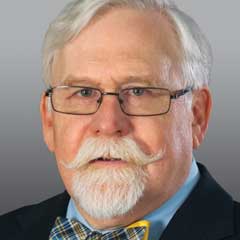
An understanding of physiology is fundamental to respiratory care practice. Unfortunately, physiological principles, after memorization in school, are often forgotten once entering practice. This lecture covers several physiological principles relevant to every respiratory care practice, linking physiology to practice.
3:15 p.m.–4:35 p.m.
Symposium
AARC Clinical Practice Guidelines 2025
3:15 p.m.–3:50 p.m. | Room 226 | Post Acute Care
Pulse Oximetry and Home Oxygen
Krystal Craddock, MSRC, RRT, RRT-NPS, AE-C, RRT-ACCS, CCM
Brady Scott, PhD, RRT, RRT-ACCS, AE-C, FAARC
Show description

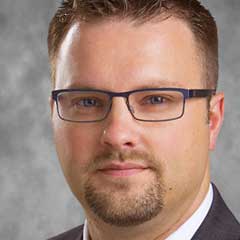
This presentation will discuss pulse oximetry to include accuracy, low perfusion states, and aspects of FiO2 titration. The recommendations for oxygen therapy when transitioning from the hospital to home will also be reviewed. The strength of the evidence for each recommendation will be discussed and an implementation strategy example will be presented.
4:00 p.m.–4:35 p.m. | Room 226 | Adult Acute Care
Patient Ventilator Assessment and Spontaneous Breathing Trials — Part Two
Lynda Goodfellow, EdD, RRT, FAARC
Karsten Roberts, RRT, RRT-ACCS, RRT-NPS
Show description


Clinicians assess patients requiring mechanical ventilation at regular intervals as part of a patient-ventilator assessment (PVA). In addition, spontaneous breathing trials (SBTs) facilitate liberation from mechanical ventilation and are an important clinical tool. The first half of this presentation will review the evidence and final recommendations for PVA implementation. This includes ventilator synchrony, dyspnea, distress, alarms, and graphics. The second half will review evidence for SBTs in facilitating liberation from mechanical ventilation. The evidence discussed includes criteria needed to perform SBTs, duration of SBTs, the use of rest settings, delaying extubation if decreased mental status is present, and the use of NIV and HFNC to screen for extubation failure.
3:15 p.m.–5:20 p.m.
Symposium
Mentorship as a Leadership Strategy
3:15 p.m.–3:50 p.m. | Room 229 | Leadership & Management
Leading by Example: The Role of Leaders in Mentoring
Michelle Rausen, MS, RRT, RRT-NPS, RRT-ACCS
Show description

The first session in the Mentorship as a Leadership Strategy Symposium will discuss the paramount importance of leading by example. Leaders must get buy-in for mentoring and inclusive mentorship culture which starts with modeling behaviors to support trust and buy-in. Attendees will leave with actionable strategies to model desired behaviors and influence through mentorship.
4:00 p.m.–4:35 p.m. | Room 229 | Leadership & Management
Mentorship Culture: Strategies for Global Engagement
Caitlyn Coppock, RRT, RRT-ACCS
Show description

The second session in the Mentorship as a Leadership Strategy Symposium will review the importance of culture in mentorship. Attendees will leave with actionable strategies to gain buy-in and elevate formal mentorship within their departments and teams.
4:45 p.m.–5:20 p.m. | Room 229 | Leadership & Management
Beyond One on Ones: Expanding Mentorship Through Coaching and Development
Kim Bennion, MsHS, RRT, CHC, FAARC
Show description

The last session in the Mentorship as a Leadership Strategy Symposium will explore the global engagement needed to support mentorship transitions. The importance of peer coaching and team development will be reviewed, and leaders will leave with actionable strategies to continue mentorship beyond one on ones.
3:15 p.m.–5:10 p.m. | Room 121 | Neonatal/Pediatric
Open Forum #6 — Neonatal/Pediatrics Part 2
Show description
Researchers present the results of their work. Authors briefly present their findings and engage in an open discussion with the attendees.
Supported by an unrestricted educational grant from
3:15 p.m.–5:10 p.m. | Room 122 | Adult Acute Care
Open Forum #7 — Mechanical Ventilation Part 2
Show description
Researchers present the results of their work. Authors briefly present their findings and engage in an open discussion with the attendees.
Supported by an unrestricted educational grant from
4:00 p.m.–4:35 p.m. | Room 221 | Adult Acute Care
Clinical Implications of Heart-lung Interaction during MV
Sara Mirza, MD, MS
Show description

The interplay of respiratory and cardiovascular physiology in critically ill patients on mechanical ventilation is complex but crucial as it may guide the clinician’s therapeutic decisions and, possibly, affect patient outcome. This presentation will provide an overview of the concepts of heart-lung interactions during mechanical ventilation and the effects of positive pressure ventilation on preload and afterload of the right and left ventricular as well as pulmonary vascular resistance.
4:00 p.m.–5:20 p.m.
Symposium
Clinical and Social Drivers of Poor Pulmonary Health Outcomes
4:00 p.m.–4:35 p.m. | Room 227 | Adult Acute Care
Social Drivers of Health and the Impact on Pulmonary Disorders
Teresa Volsko, MBA, MHHS, RRT, LSSBB, FAARC
Show description

Health disparities exist especially among individuals whose income is at or below the federal poverty level. Social drivers of health include social, economic, and environmental factors, and play a vital role in these disparities. This lecture will focus on how social drivers of health significantly affect adults with pulmonary disorders and negatively impact pulmonary health outcomes. The impact respiratory therapists can make by integrating a social driver assessment into their practice to improve the health of their patients will be discussed.
4:45 p.m.–5:20 p.m. | Room 227 | Neonatal/Pediatric
Integrating Screening Tools to Identify Clinical and Social Barriers to Care
Joyce Baker, MBA, RRT, NPS, AE-C, FAARC
Show description

Studies have shown patients and caregivers are more likely to communicate barriers to following the home management plan with a non-physician. As non-physicians, respiratory therapists have a unique opportunity to aid patients in improving outcomes and quality of life through earlier identification of social and clinical barriers to care. This lecture will focus on how social and clinical drivers of health contribute to poor health outcomes in children and practical applications of screening questions can prompt respiratory therapists to advocate for their patients and their caregivers.
4:45 p.m.–5:20 p.m. | Room 221 | Adult Acute Care
Avoiding ARDS and Intubation: Prevention or Placebo?
Michelle Gong, MD, MS, ATSF
Show description

Data for appropriately and effectively utilizing non-invasive respiratory support in patients with both increasing and decreasing acuity is rapidly emerging. An overview of the most recent guidance for the use of high flow nasal oxygen and non-invasive ventilation in acute respiratory failure will be reviewed.
4:45 p.m.–5:20 p.m. | Room 226 | Adult Acute Care
The Effects of Comorbid Conditions on COPD Outcomes
Lanny Inabnit, RRT, RRT-ACCS, RRT-NPS
Show description

Management of COPD patients and coordination of their care in both the inpatient and outpatient settings can be complicated by common comorbid conditions. When combined with factors like rurality, outcomes for patients with COPD can be greatly affected. This presentation will also discuss the impact that rurality and comorbid conditions related to rurality have on COPD outcomes.
There are no sessions that match your display preferences.
